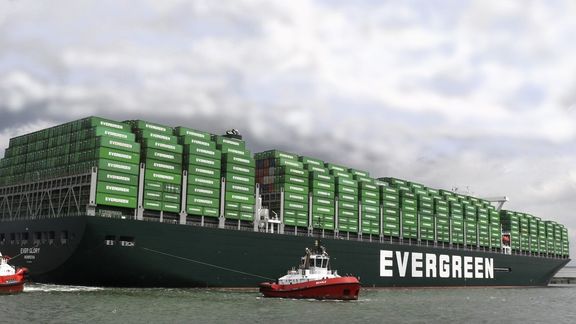Containers drive throughput growth in port of Rotterdam
The port of Rotterdam achieved throughput of 240.7 million tonnes in the first six months of 2019. That is 3.4% more than in the first six months of 2018. Container throughput, one of the strategic priorities of the Port Authority, rose by 4.8% (in tonnes, +6.4% in TEU) by comparison with the first six months of 2018, which is also a new throughput record. That growth was mainly due to higher import and transhipment volumes.

Highlights
• Total throughput of 240.7 million tonnes, a new record
• Increase in container throughput to 7.5 million TEU (+6.4% in TEU, +4.8% in tonnes)
• Moderate increase (+4.0%) in revenue of the Port of Rotterdam Authority to € 357.8 million
• Clear increase (+7.0%) in operating result to € 134.8 million
• Ongoing high investments (€ 177.1 million) in infrastructure
Other positive highlights were in the crude oil (+2.8%) and LNG (+94%) market segments. The rise in crude oil was driven by more imports of cheaper oil from the United States. LNG benefited mainly from more exports of American gas to Europe. Falls were seen in the first half year in the mineral oil products (-5.8%) and agribulk (-7.2%) market segments.
Financial results of the Port Authority
The financial results of the Port of Rotterdam Authority were good in the first half of 2019. Revenue from port dues, and rental and leasehold income from issued land, increased slightly, leading to a rise in revenue of 4.0% to € 357.8 million, with liquid bulk making the largest contribution. Partly because operating expenses rose less than revenue, the result from ordinary activities before taxation improved by 7.0% to € 134.8 million.
CEO Allard Castelein: “Throughput in the port is doing well, particularly in the strategically important container market segment. The financial results of the Port Authority are good. We can therefore continue to invest in the port, in physical infrastructure and in digital solutions for trade and logistics”.
Energy transition
Over the past six months, significant progress has been made once again in the port of Rotterdam in the field of the energy transition. There has been considerable interest from the business community, for example, in participating in the Porthos project for the storage of CO2 in depleted gas fields under the North Sea. And a feasibility study for H-Vision was presented recently. H-Vision is the large-scale production and application in industrial processes of hydrogen produced in carbon-neutral ways. It is also known as 'blue hydrogen'. It will allow for a reduction in carbon emissions of between two and four megatonnes before 2030.
The Dutch government's proposed climate agreement, which was published in late June, will generate opportunities and threats. CEO Allard Castelein: “The proposed cluster approach, and the focus on infrastructure and hydrogen, actually represent opportunities for industry in Rotterdam. The Port of Rotterdam Authority is eager to work on the details with the national government in the near future. However, we think it is very important for the introduction of a CO2 tax to be accompanied by the construction of the required physical infrastructure so that companies are given opportunities to reduce their carbon footprint. That is good for the business climate and competitive position of the Netherlands”.
Investments in infrastructure
The level of investment in the first six months of 2019 remained high (€ 177.1 million).
The Port of Rotterdam Authority is actively collaborating on the enhancement of reliability in the logistics chain. The first pile was driven for the Container Exchange Route in May. The construction of the Theemsweg route, which involves rerouting a section of the port railway line, is on schedule.
Digitisation
The Port of Rotterdam Authority is taking the lead in the digital transformation of the port and logistics. This will enhance efficiency in the major trade routes, reduce costs and cut carbon emissions. The port of Gdansk has switched to Navigate, the route planner for shipping developed by the Port of Rotterdam Authority. In May, the sensor-equipped Container 42 left the port of Rotterdam for a two-year trip around the world. With the help of real-time information, waiting times can be reduced and berthing, loading, unloading and departure times can be optimised. The efficiency insights generated by the collected data will be applied in the port of Rotterdam to further strengthen its competitive position.
Outlook
CEO Allard Castelein: “In the macroeconomic field, relations between the world's major trading blocs remain strained. There is also ongoing uncertainty about the introduction of trade tariffs post-Brexit. Both developments are rendering the prospects for the further growth of world trade uncertain. Given the global uncertainties mentioned here, the Port of Rotterdam Authority expects a slight weakening of the growth in cargo throughput in the second half of 2019”.